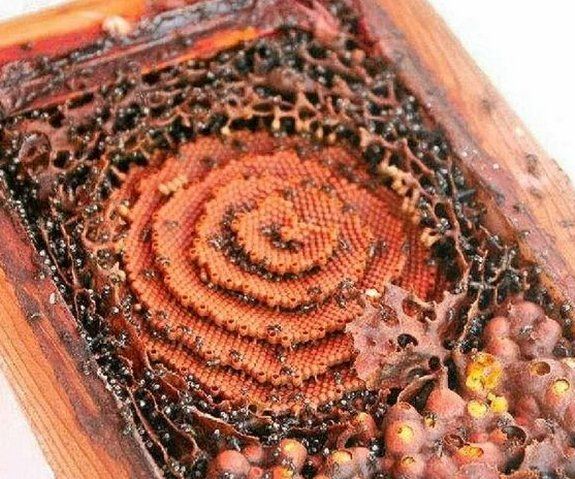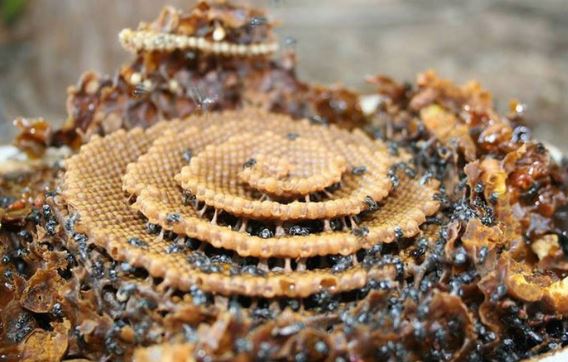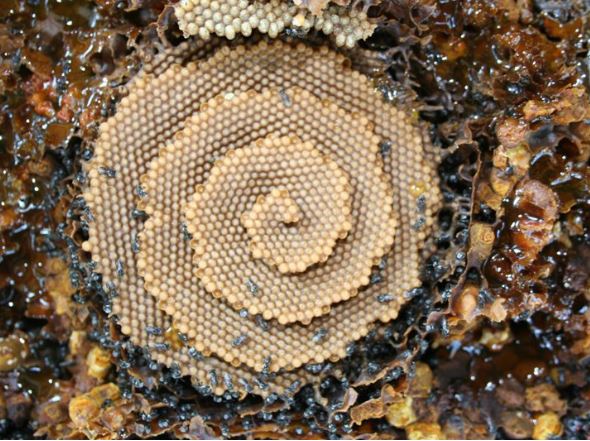Out of around 20.000 known bee species in the world, the Tetragonula Carbonaria (T. Carbonaria) is one of only 500 bee species that do not have stingers. This Australian stingless bee is not a regular pollinator.
However, the fact that these bees do not have stingers does not mean that they can not defend themselves. Many people who have tried to infiltrate to the nests of T. Carbonaria were covered in a brew of wax, mud and plant resin. In other words, they have been mummified alive by bees. These bees do not protect themselves only from people. They also protect themselves from their stingless neighbors. It is typical for these kinds of bees to have days-long territory wars against each other.
The Spiral Nests
These “fights” are quite reasonable though, we would all fight if we had to protect home like this one. As seen in a popular photo posted to Reddit, swarms of T. carbonaria rear their young in mesmerizing, spiral-shaped towers called brood combs. This, linking hundreds of individual egg chambers together into a continuous staircase of unborn baby bees.

Tim Heard, an entomologist, took the photo while researching stingless bees for The Commonwealth Scientific and Industrial Research Organisation (CSIRO) in Australia. In an e-mail, he said: “The image is just one layer of the brood comb. A fully developed nest consists of 10-20 layers. Each layer is one circle of a continuous spiral.”
The little circular pods you see forming this spiral are called brood cells. Within these cells, individual bees grow from egg to adulthood in the span of about 50 days, Heard wrote in his stingless bee-keeping manual, “The Australian Native Bee Book” (Sugarbag Bees, 2015). To build these cells, worker bees secrete wax from their abdominal glands and mix it with a plant resin derivative, making a sturdy construction material called cerumen.
How do they do these spiral nests?

Why the spiral shape?
“It may be unwise to attempt to explain the adaptive significance of why this form may have evolved,” Heard told Live Science. “Perhaps, it is just the outcome of some random behavior or perhaps it is adaptive. A possible adaptive advantage of this form is that it is an efficient use of space and also facilitates the circulation of air between the layers. But then one has to ask, why it is not more common.”
Source: Live Science

